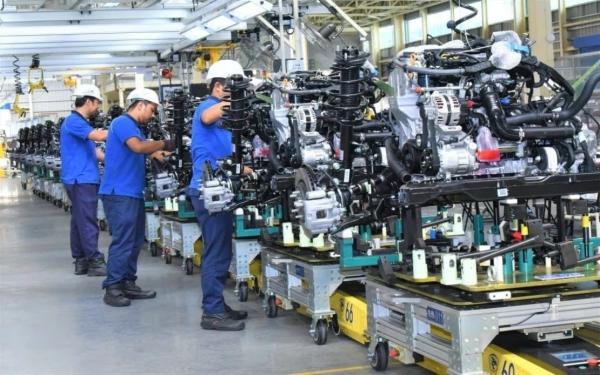THE Trump administration did not just slap tariffs on foreign goods — it rewired the global trading circuit. It turned trade policy into a geopolitical earthquake, and the aftershocks did not stop at American ports or Chinese factories.
They hit hard in unexpected places, like the small and medium enterprise (SME) subcontractor in Selangor who suddenly lost a bulk electronics order, or the glove packager in Klang scrambling to meet new regulatory demands. They hit the logistics manager in Johor, rerouting containers around bottlenecks, as the entire map of global commerce redrew itself in real time.
Most Malaysian SMEs sit in the middle of the value chain. They supply components: textiles, electronics parts, palm oil derivatives, and provide freight forwarding and warehousing services. They are the connective tissue in global commerce, making them vulnerable.
When United States-China trade flows were disrupted, it was not just macroeconomic theory playing out — it was invoices, shipments, and production lines getting thrown off course. Input costs rose, orders fell, and trade patterns shifted.
But for some SMEs, that chaos became a catalyst.
SMEs make up nearly 38.4 per cent of Malaysia’s GDP and employ close to half of its workforce. They account for about 11.7 per cent of the nation’s exports and are essential players in global value chains, especially in sectors like electrical and electronics, palm oil, rubber-based goods, and manufacturing services.
But they have long been stuck in a role defined by cost efficiency rather than value creation. If the Trump-era trade wars taught us anything, it is that the era of competing solely on price is over. The world now rewards resilience, innovation, and adaptability.
That means SMEs must evolve — from original equipment manufacturing, to original design manufacturing, and eventually to original brand manufacturing. This shift is not cosmetic; it is existential. It is the difference between being a subcontractor and becoming a brand owner, a designer, a market-maker.
To get there, SMEs must embrace digitalisation, automation, and vertical integration. Industry 4.0 tools — ERP systems, robotic assembly, real-time supply chain tracking — are no longer optional. Strengthening IP portfolios and developing proprietary products are the new frontlines of competitiveness.
But not every SME can make that leap alone. Government support becomes critical. Grants for technology upgrades, incentives for export and innovation, and trade facilitation policies are not just nice to have — they are lifelines.
At the same time, Malaysia needs a sharper understanding of where SMEs sit in the economic matrix. That is where economic modelling enters the scene; not as ivory-tower academia, but as GPS for navigating global shocks. Input-output models help map where SME activities are concentrated and how sectors interact.
CGE models, like those built on the GTAP framework, simulate the domino effect of tariffs, showing how a policy shift in Washington ripples into palm oil exports in Sabah or electronics hubs in Penang. ORANI-MY, a more tailored CGE model, can zoom in to quantify actual changes in output and jobs under different trade scenarios.
But not all models are created equal. If CGE models are the satellite view, Agent-Based Models (ABMs) are the street-level map. They simulate how individual SMEs might react, by switching suppliers, pivoting to new products, or laying off staff.
ABMs are especially powerful in uncertain environments where behaviour matters as much as policy. And while DSGE models are great for national forecasts, they do not capture the grit and grind of the SME owner recalibrating under pressure.
The economic landscape that emerges from these tools is uneven but illuminating. Electrical and electronics SMEs — tied closely to China — saw orders evaporate. But furniture makers in Muar and Batu Pahat were suddenly flooded with interest from US buyers, eager to replace Chinese suppliers.
Rubber glove producers, long part of global health supply chains, saw mild boosts even before Covid-19. Plastics and chemical SMEs were hit by cost volatility as their Chinese inputs became more expensive or scarce. In contrast, logistics firms thrived amid trade rerouting, with freight forwarders and warehouse operators finding new life in a turbulent world.
In short, Malaysian SMEs are no longer passengers on the globalisation train — they are drivers. But to steer effectively, they must be equipped with data, tools, strategy, and support. The post-tariff world demands more than low prices — it demands smart positioning, agile adaptation, and bold moves up the value chain.
If Malaysia gets this right, its SMEs will not just endure the next economic tremor — they will rise with it. Because in a world where the ground is always shifting, the smartest move is up.
Samirul Ariff Othman is an international relations analyst and economic commentator. A former senior researcher at the Malaysian Institute of Economic Research, he has written extensively for numerous regional outlets. Currently, he is a senior consultant with Global Asia Consulting and an adjunct lecturer at Universiti Teknologi Petronas. The views in this article are entirely his own.







